Pretty Pretty Petunias
PRETTY PRETTY PETUNIAS
Petunias are one of the most popular annual garden flowers for use in borders and containers. In fact, the Proven Winners® list of its ‘Top 50 Best Selling Annuals’ awards the top three slots to a petunia variety. And it’s not hard to see why…
- Petunias are prolific bloomers;
- They come in a variety of colors;
- They can be striped, veined, spotted or solid;
- Some have single blooms while others have double blooms;
- Some have smooth petals while others are more ruffled;
- Some cascade while others mound beautifully in the landscape.
In other words, there is a petunia for every gardener!
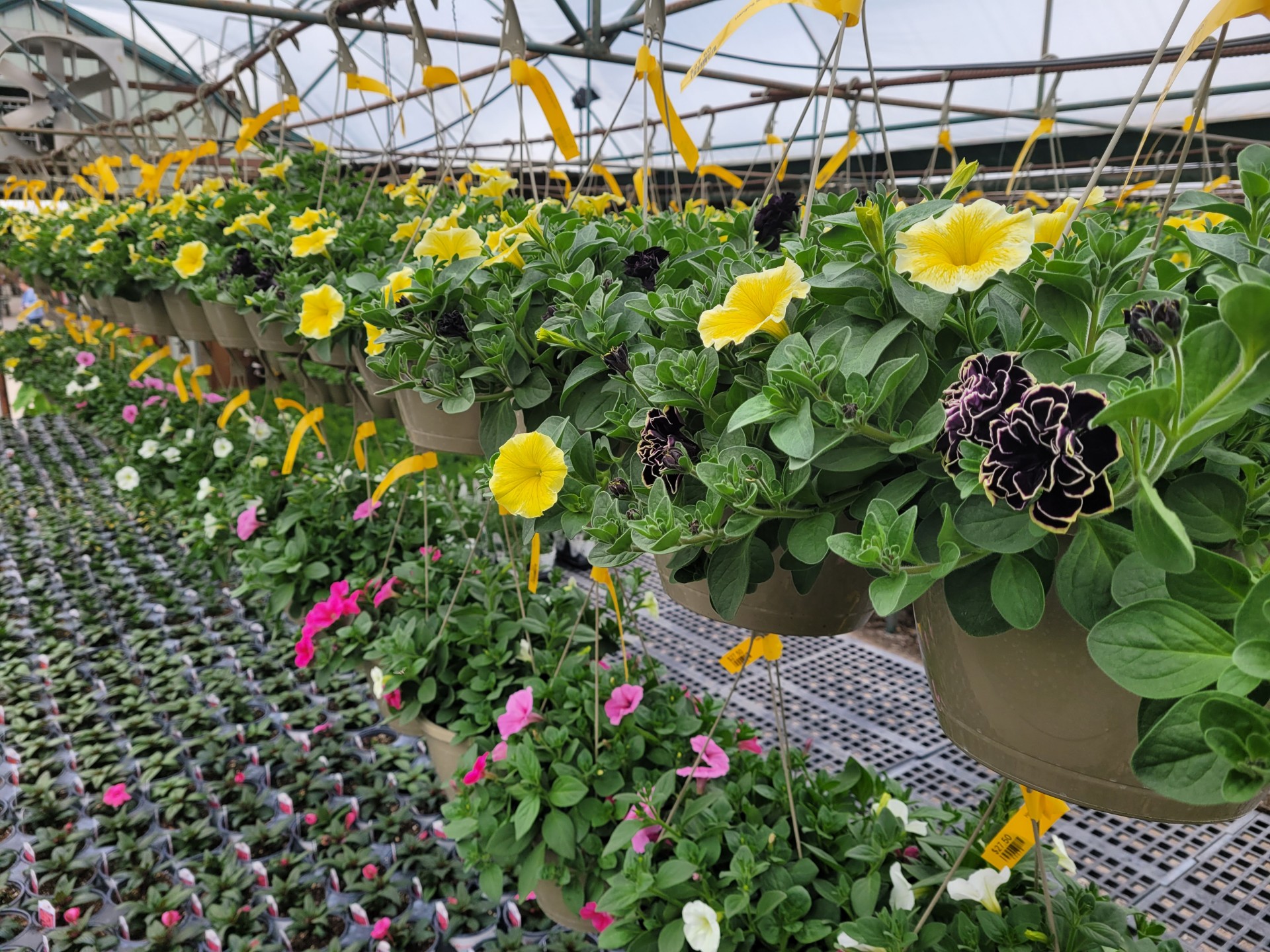
PETUNIA TIPS
Petunias are some of the earliest annuals available at Marcum’s Nursery. In Oklahoma, petunias provide spring blooms that last into summer. Extreme summer heat can temporarily cause blooming to stop, but – if cared for properly – petunias will often bloom again in the fall.
Here are the keys to having success with petunias this season!
LIGHT
Generally petunias prefer full sun, meaning at least six hours of direct sunlight most days, to bloom abundantly. However, as summer temperatures rise, moving petunia baskets or pots to a spot with partial shade (especially shade from the strong afternoon sun) is a welcome reprieve.
PRUNING
Older petunia varieties require deadheading for continuous bloom while many modern, hybrid varieties are self-cleaning. Pinching back the tips will promote more branching, and you can always prune plants that become lanky and pull off spent blooms.
WATER
Like most annuals, petunias don’t like to be dry for too long; they also don’t like to sit in soggy soil potentially rotting their roots. Consistent watering is crucial to getting maximum blooms for most annuals, and petunias are certainly no exception.
The amount of water needed varies based on multiple factors: temperature, wind, humidity, soil composition and whether planted in landscape beds, pots or hanging baskets. Set a schedule to check on and care for your flowers, and don’t allow the top couple inches of soil get dry.
Here are a few Pro Tips around watering:
- Some of our most successful clients report setting a daily reminder on their phone helps them stay on top of checking in on and caring for their hanging baskets and pots.
- Soil Moist™ granules absorb water and gradually release it into drying soil. This can help your potted petunias better survive a period of neglect.
- If you have an area you want to look really nice but that you don’t access each day, like a front porch for example, consider investing in an AquaPots® planter. AquaPots® are high-quality and durable, they come in timeless colors and designs, and they practically water and fertilize plants for you!
FERTILIZATION
Fertilizer is food! If you want petunias bursting with blooms, you have to feed them.
Petunias planted in landscape beds don’t have to be fed as often because their roots can spread out to find the nutrients they need in the soil. To get petunias in beds off to a good start at the time of planting, use Marcum’s Nursery Redbud Compost and a slow release fertilizer, such as Marcum’s Nursery Flower Food (14-14-14) or ferti-lome® Premium Bedding Plant Food (7-22-8), then feed them on 30 day intervals.
Petunias in pots and hanging baskets require more food to bloom repeatedly. For example, the hanging baskets in our greenhouses get a low dose of balanced fertilizer each day; however, you don’t have to fertilize daily to produce beautiful blooms. Many fertilizers only need to be used on 7-14 day intervals. Some water soluble fertilizer options include ferti-lome® All Purpose Water Soluble Plant Food (20-20-20), ferti-lome® Blooming & Rooting Soluble Plant Food (9-58-8) and Marcum’s Nursery Bloom Max™ (10-55-10). A couple of liquid organic options are ferti-lome® Fish Emulsion Fertilizer (5-1-1) and Fox Farm® Big Bloom® Liquid Plant Food (0-0.5-0.7). Be sure to check your fertilizer label for application instructions.
CURRENTLY BLOOMING AT MARCUM’S
Varieties vary by location. While supplies last!
Evening Safari Petunia
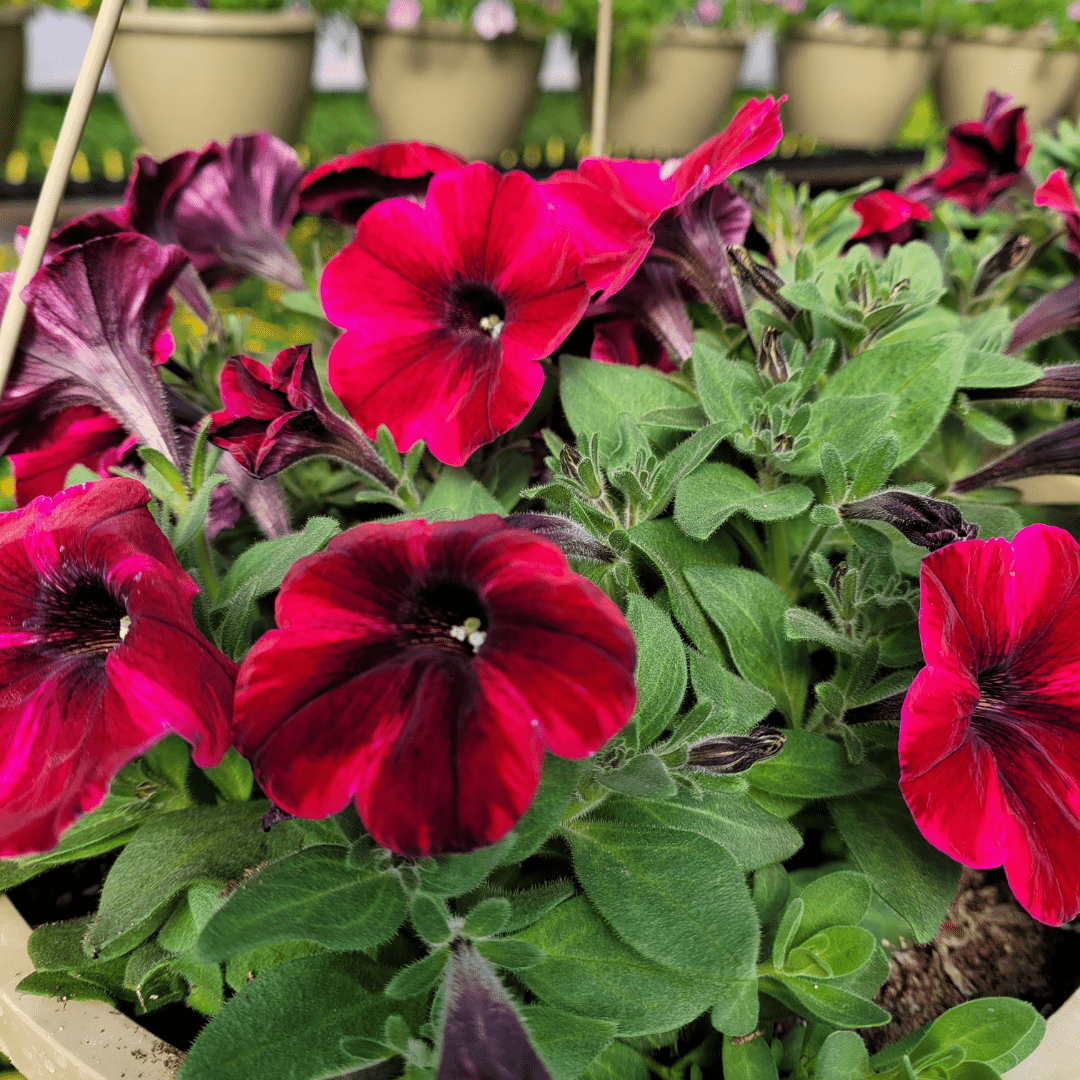
Bee’s Knees Petunia

Crazytunia® Blackberry Cheesecake
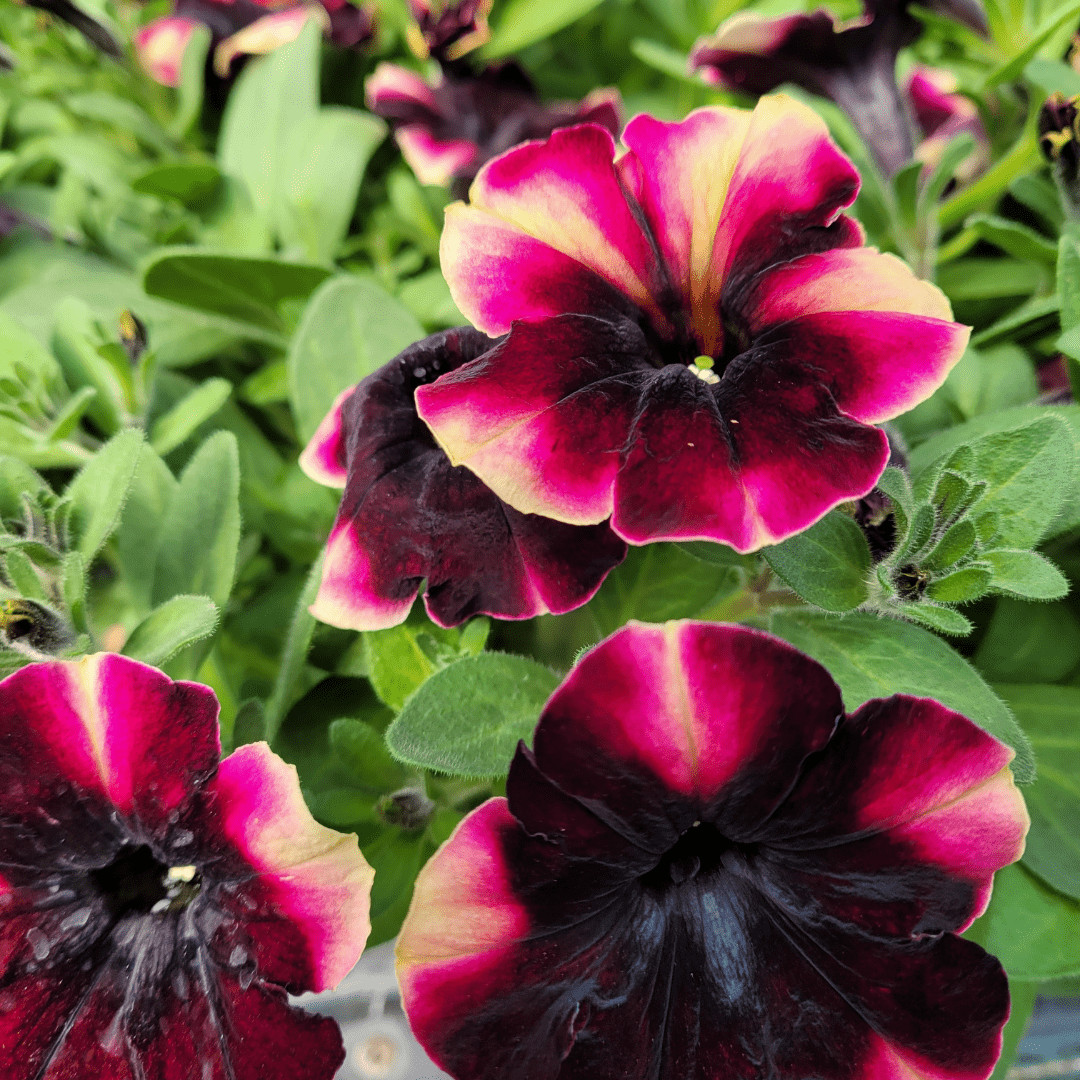
Crazytunia® Mandeville Petunia
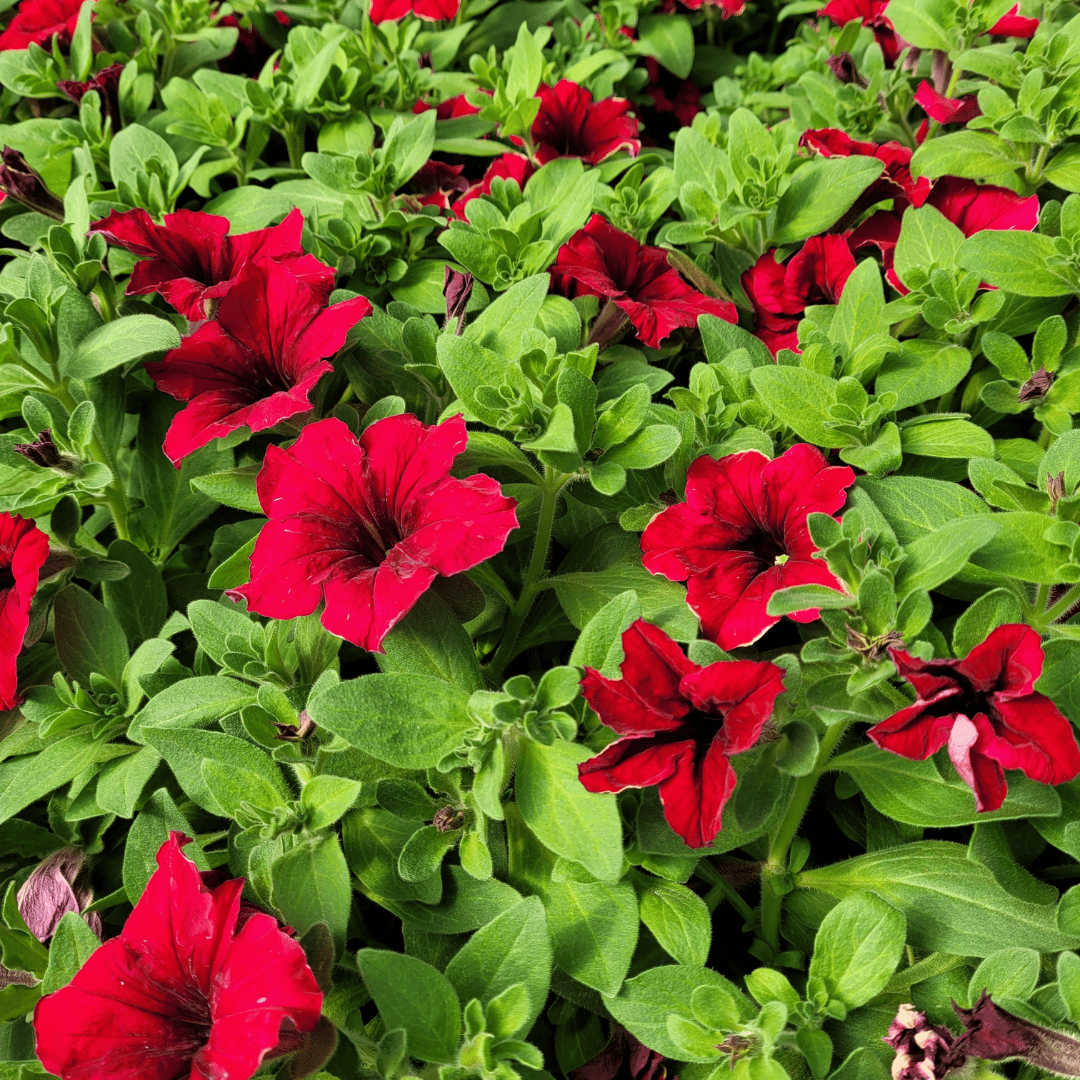
Easy Wave® Burgundy Star

Crazytunia® Moonstruck Petunia
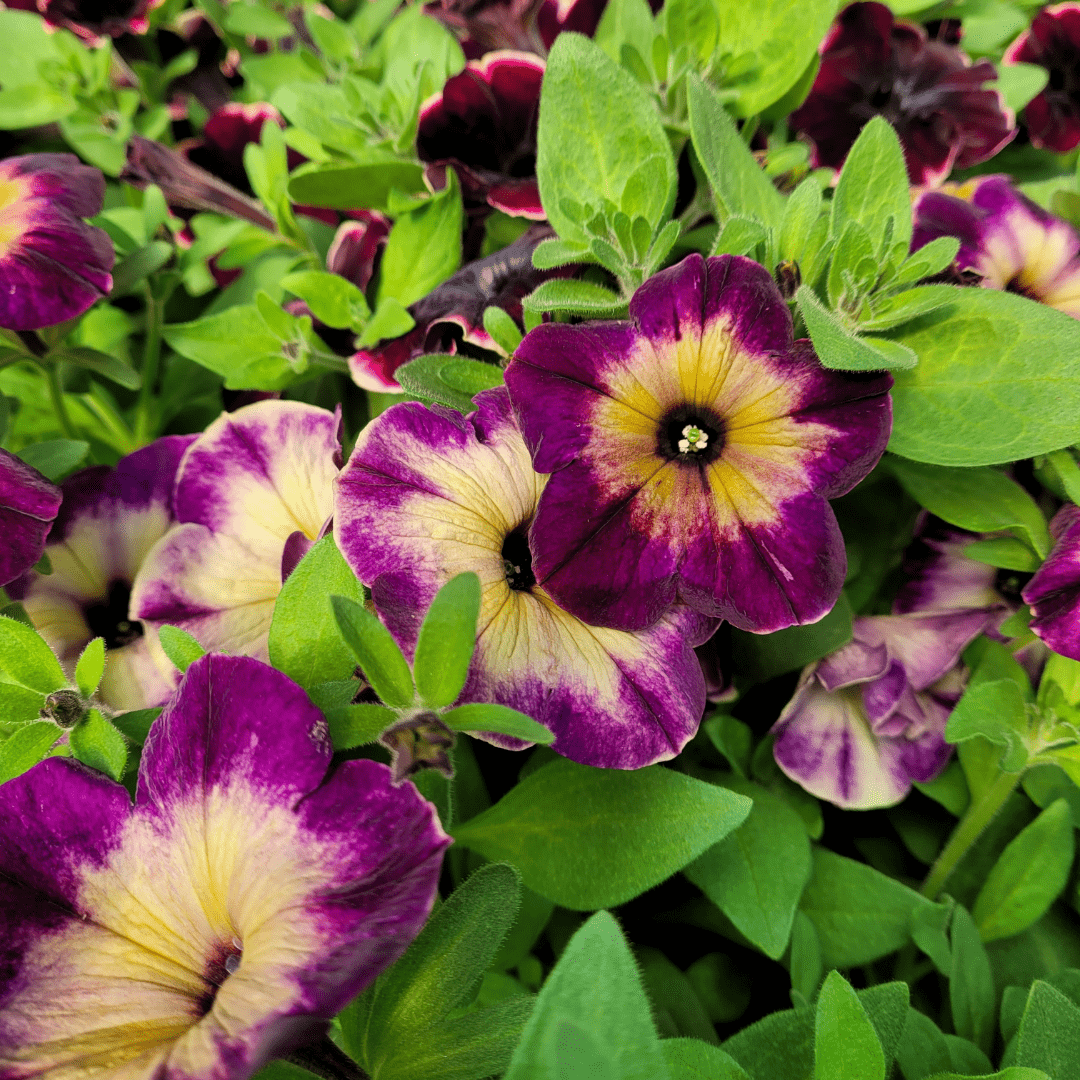
Petunia Capella™ Indigo
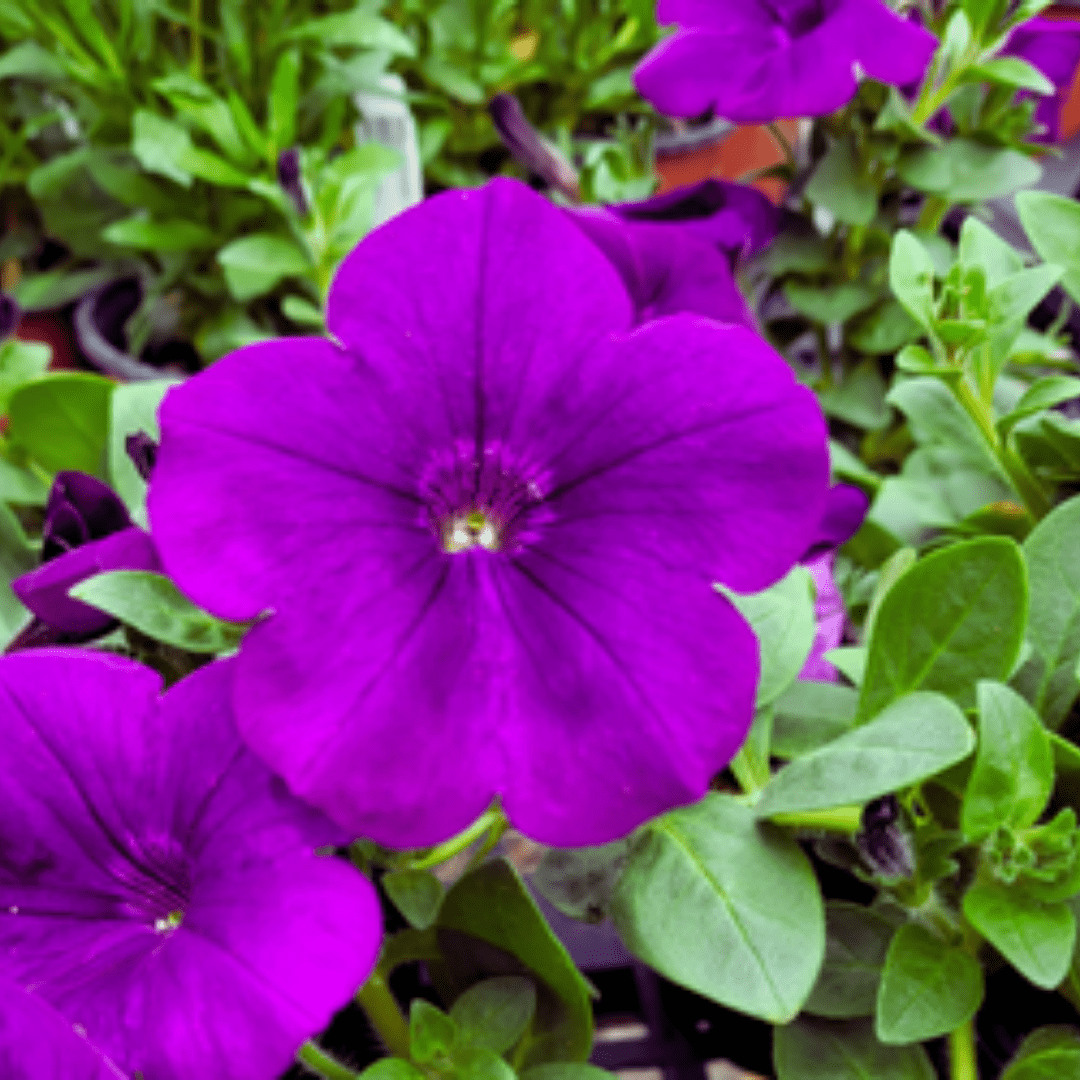
Petunia Capella™ Salmon

Petunia Headliner™ Pink Sky

Headliner™ Starry Sky Burgundy

Hello, Hellebores
CARE TO MEET THE PERFECT PERENNIAL?
Say hello to hellebores! This easy-to-grow, drought-tolerant perennial produces early, long-lasting blooms in addition to providing year- round interest with evergreen foliage. Hellebores are winter-hardy and require little attention to make it through the harsh winter months.
Throughout most of North America, hellebores bloom in February or March often coinciding with the Lenten season. Keep reading for tips on growing these beauties and find out which varieties you can pick up now at Marcum’s Nursery.

CATEGORIES FOR HELLEBORES
The hellebore, Helleborus, is a member of the Ranunculaceae family. There are approximately 20 species of hellebore as well as various subspecies. Some of the more easy-to-find species and their hybrids are Christmas Rose (H. niger), Corsican hellebore (H. argutifolius) and Lenten Rose (H. orientalis).
Most of the varieties available at Marcum’s Nursery this season will be Lenten Rose (H. orientalis).
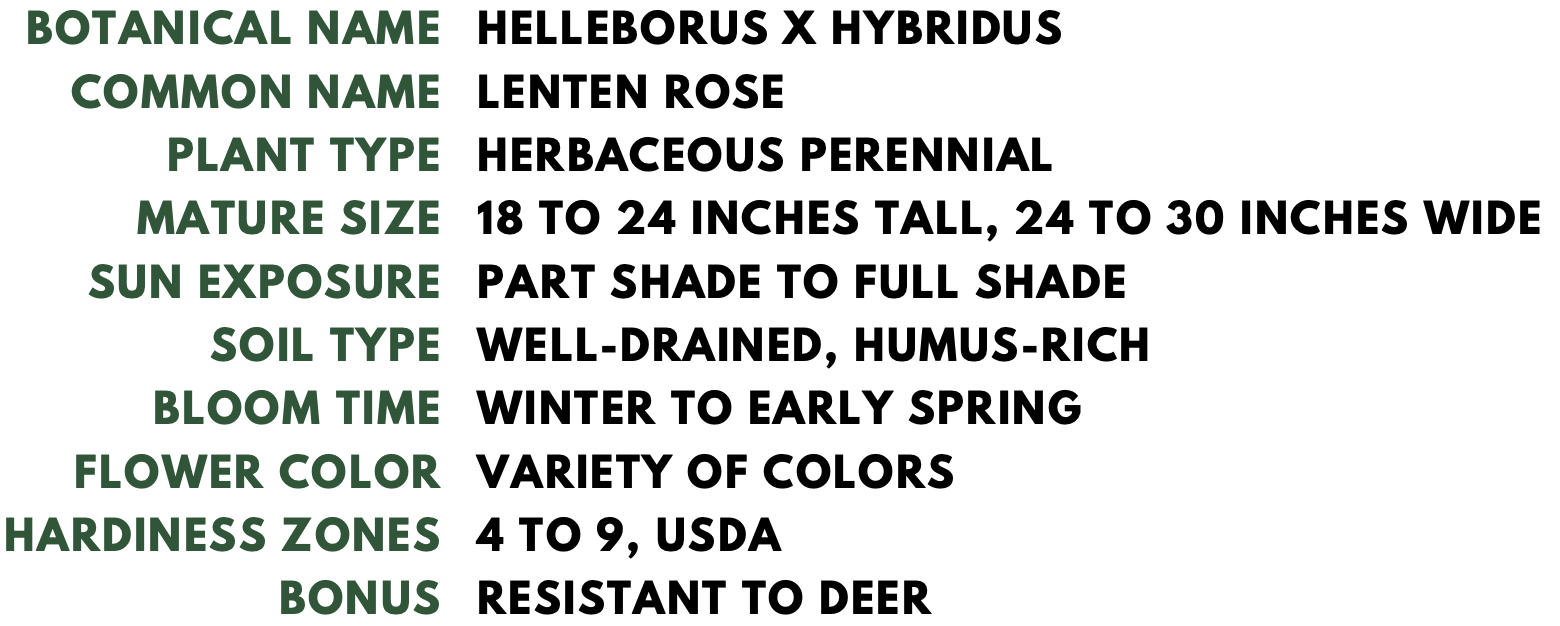
TIPS FOR GROWING HELLEBORES
LIGHT
SOIL
WATER
Hellebores benefit from sunlight during the winter when they are beginning their growing and blooming season, but they don’t appreciate the direct, hot sun of summer. If possible, site hellebores beneath trees that drop their leaves in winter to ensure adequate sunlight during bloom time and shade in the warmer months.
Hellebores like humus-rich, well-drained soil. Since our soil can tend to be heavy and higher in clay content, consider amending the soil with gypsum and organic matter, like Marcum’s Nursery’s Redbud Compost, before planting your hellebores; this will speed plant growth and establishment. Be careful not to plant hellebores too deeply. The crown of the plant should be just below the soil’s surface.
Soil around hellebores should be damp about one inch below the surface. This can usually be accomplished by watering once to twice per week. Once established hellebores are quite drought-tolerant.
PROPER DIVISION
HELLEBORE TOXICITY
Divide and transplant hellebores in the fall. Dig up the entire plant, wash the soil from the roots, then divide with a sharp knife between growth buds. Leave at least three shoots on each division.
All parts of the hellebore plant are toxic (which is one of the reasons deer and rabbit avoid them), so if you are sensitive to the alkaloids in the leaves, wear gloves when handling to avoid skin irritation.
CURRENTLY AVAILABLE AT MARCUM’S
All of the featured hellebore varieties are currently in bloom at a Marcum’s near you. Come and get these beauties before they’re gone! While supplies last. Quantities and varieties vary per Marcum’s Nursery location. Give us a call with any questions.
FrostKiss™
‘Anna’s Red’
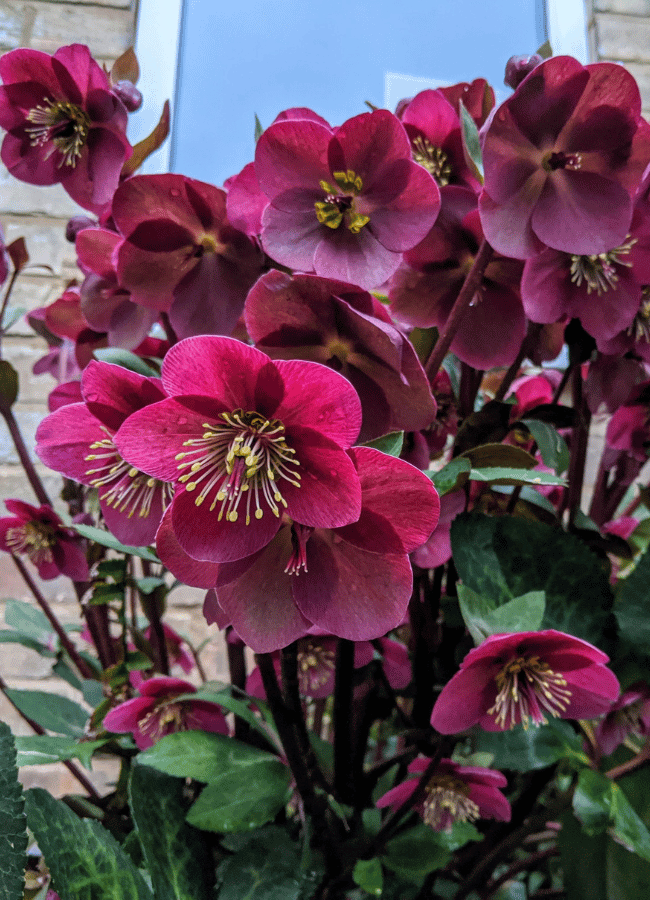
Winter Jewels®
‘Apricot Blush’
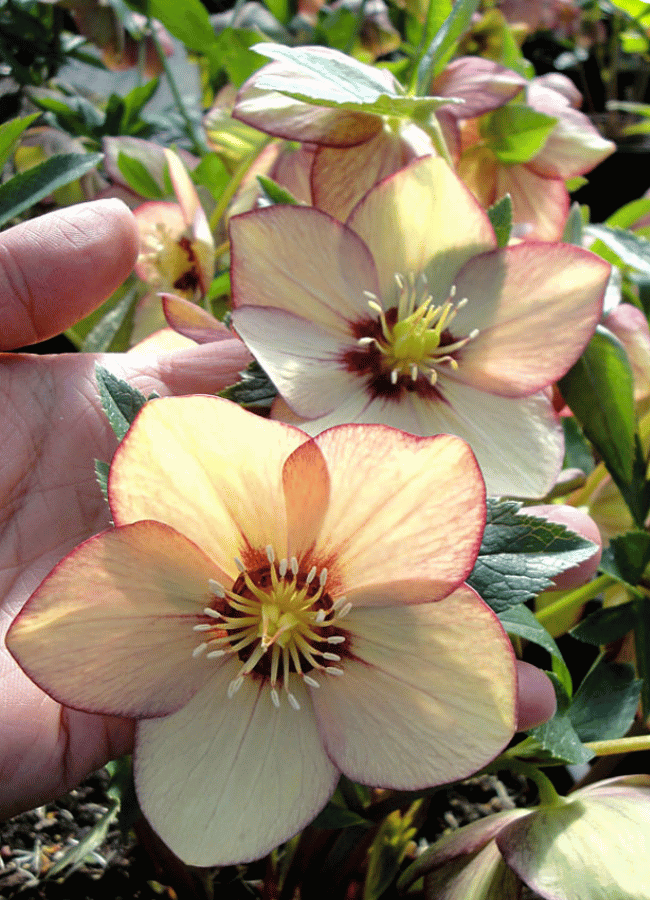
Winter Jewels®
‘Berry Swirl’
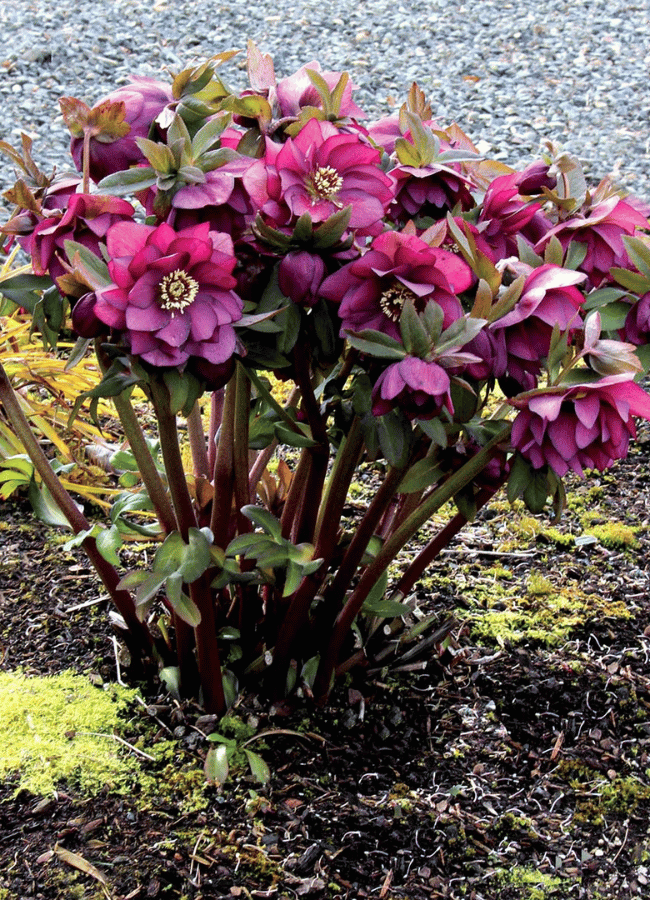
Wedding Party®
‘Blushing Bridesmaid’

Winter Jewels®
‘Cherry Blossom’
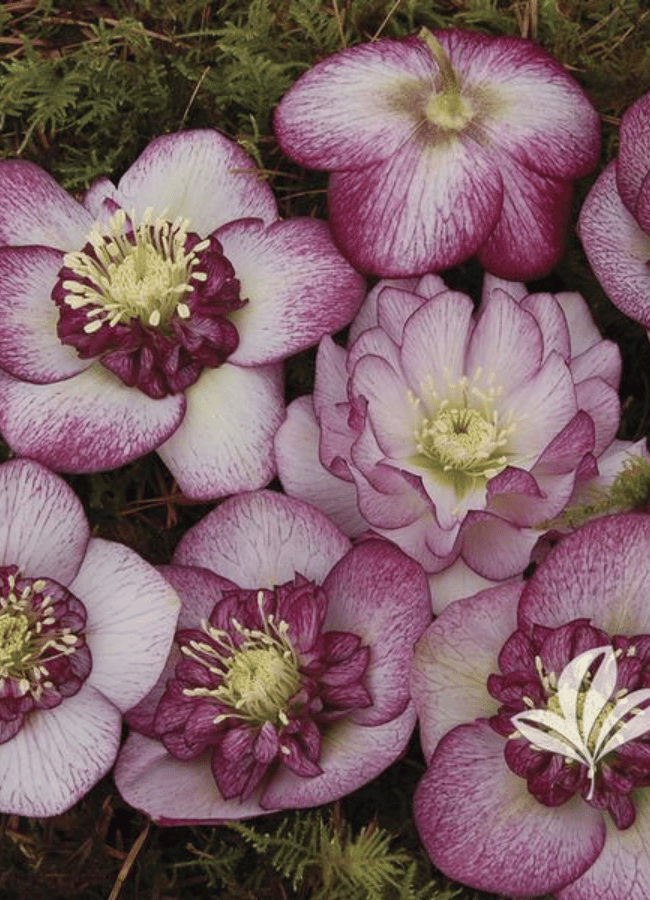
Winter Jewels®
‘Cotton Candy’

FrostKiss™
‘Dorothy’s Dawn’
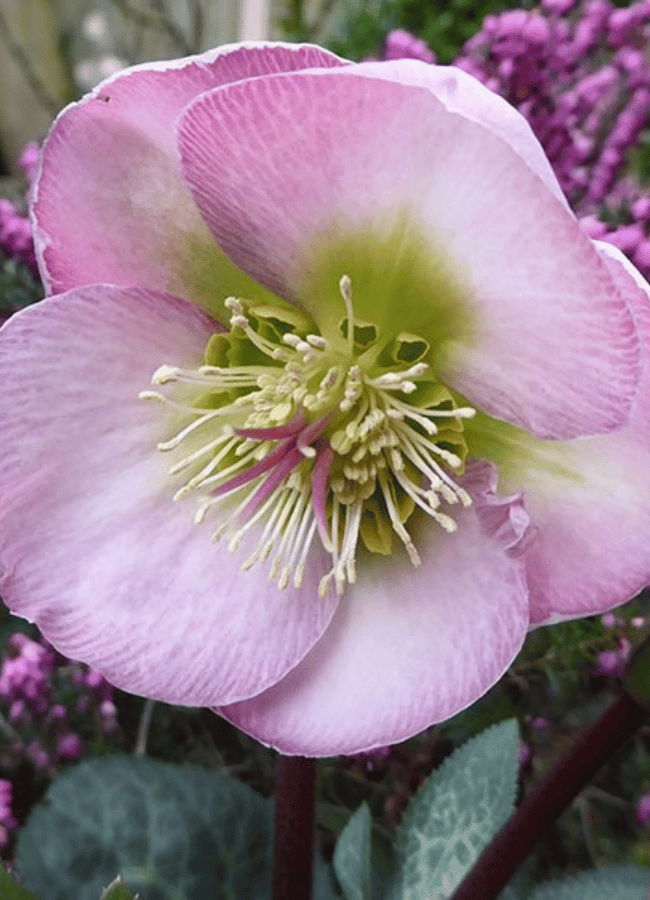
Wedding Party®
‘Flower Girl’
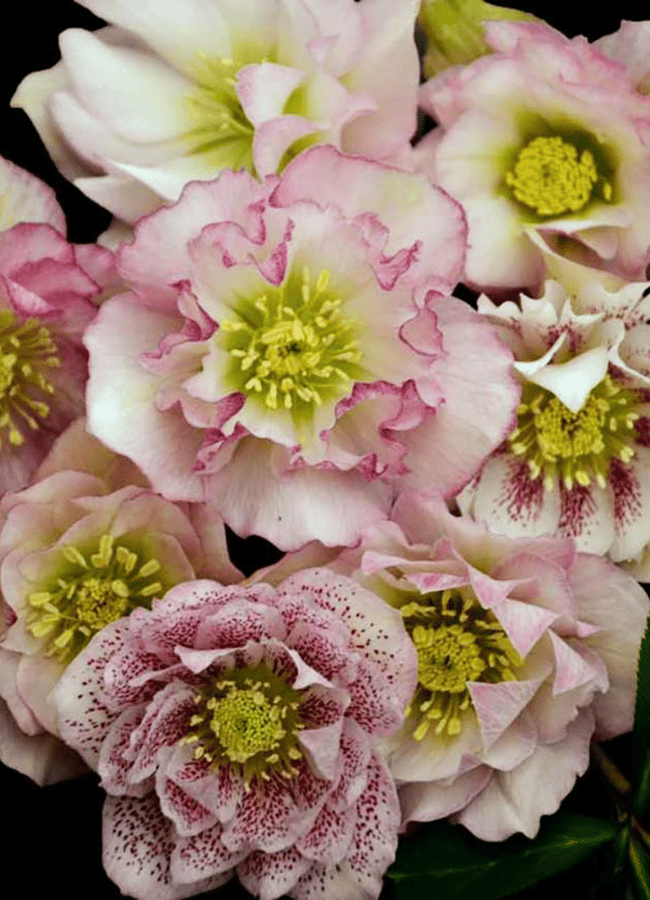
Frostkiss®
Glenda’s Gloss®
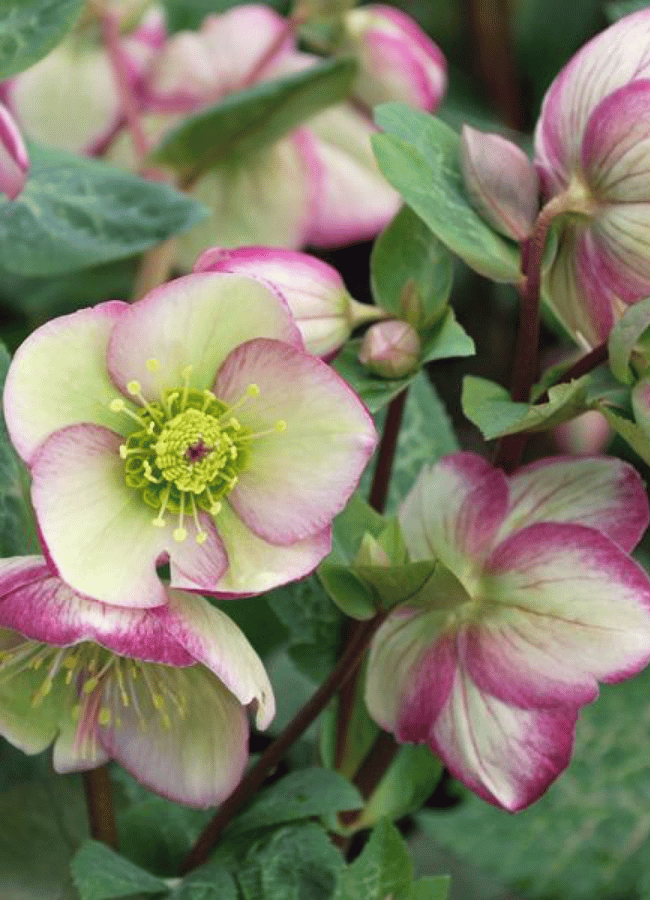
Honeymoon®
‘Irish Luck’

Wedding Party®
‘Maid of Honor’
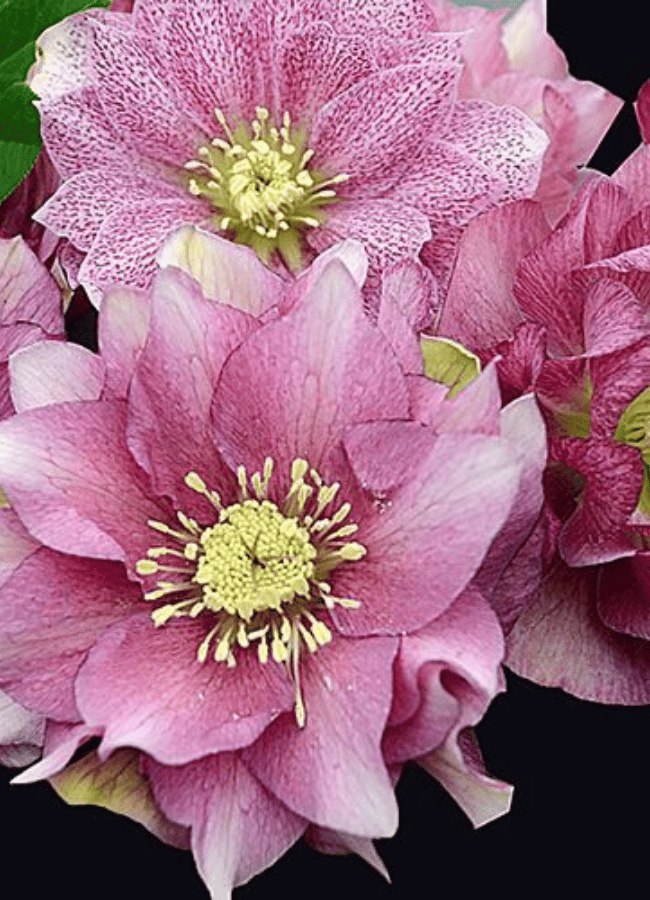
FrostKiss™
‘Moondance’
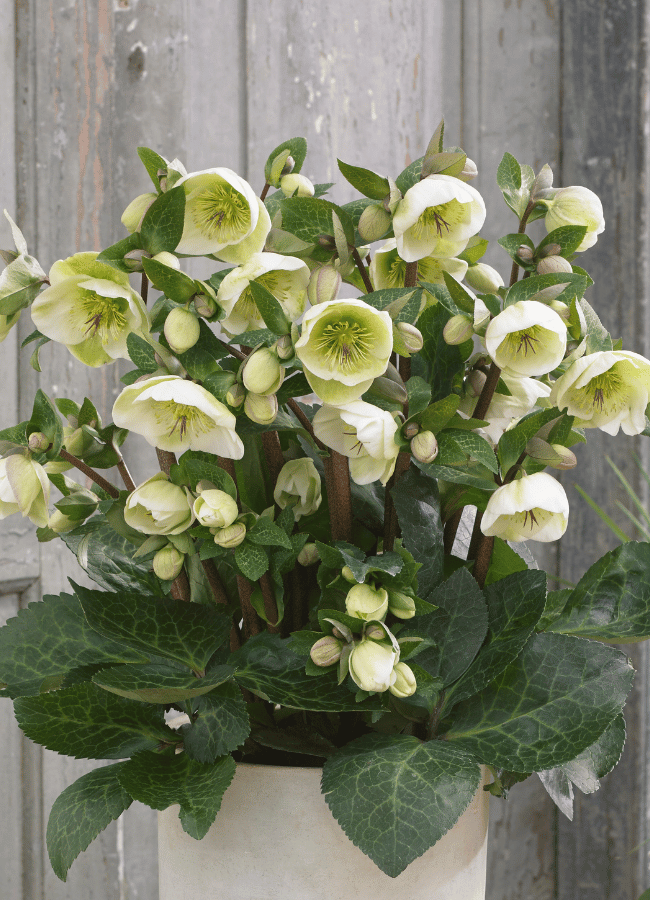
Honeymoon®
‘Rio Carnival’
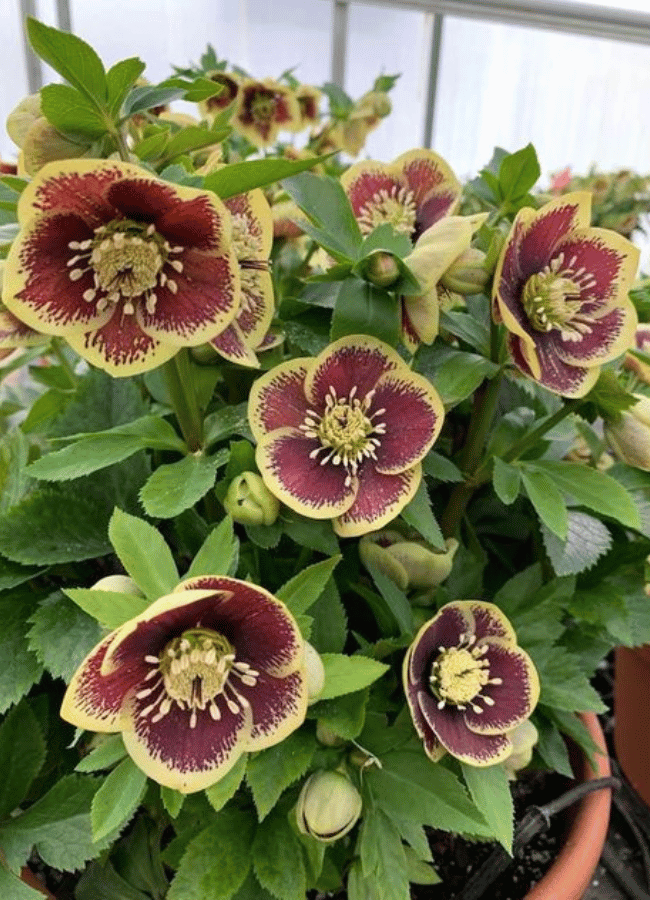
Honeymoon®
‘Romantic Getaway’

Honeymoon®
‘Sandy Shores’

Winter Jewels®
‘Sun Flare’
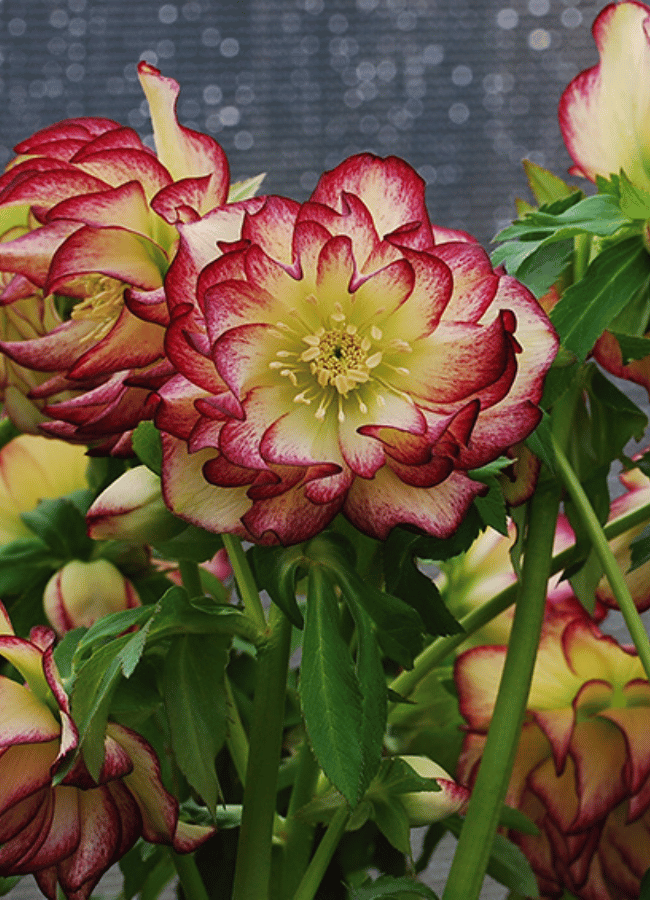
Honeymoon®
‘Tropical Sunset’
